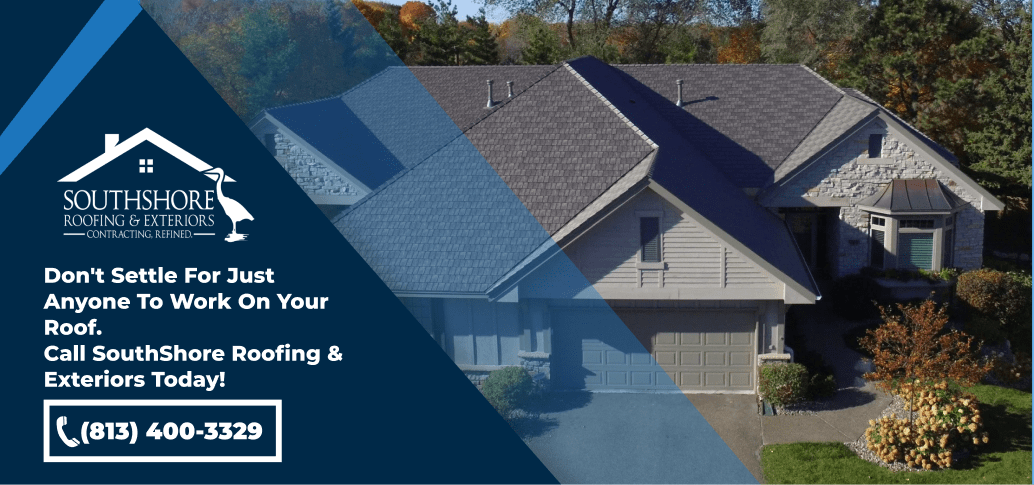Tampa homeowners face a unique challenge when it comes to maintaining their property’s exterior: relentless sun exposure. Florida’s intense UV rays can damage siding materials, causing significant damage that affects both curb appeal and structural integrity. Sun damage to siding is not merely a cosmetic concern, it represents a genuine threat to your home’s protective outer layer.
The effects of prolonged sun exposure typically show up as fading, where once-vibrant colors become dull and washed out. However, the damage tends to go deeper, often leading to warping, cracking, and brittleness in materials like vinyl siding. In Tampa’s climate, where temperatures regularly soar into the 90s with high UV indexes, these problems accelerate faster than in more temperate regions.
Different siding materials react distinctly to sun exposure. Vinyl siding may buckle or distort under extreme heat, while wood siding can split, crack, or develop raised grain patterns. Even fiber-cement products aren’t immune, though they typically offer better UV protection than other options.
Understanding how the Florida sun affects your home’s exterior is the first step toward implementing effective prevention strategies and selecting appropriate siding materials. Protecting your siding from sun damage isn’t just about preserving appearances, it’s about extending the lifespan of a critical component of your home’s weather defense system.
Signs Your Siding is Suffering from Sun Exposure
Recognizing sun damage early can save Tampa homeowners significant money on repairs down the road. The most obvious indicator is faded color, where areas exposed to direct sunlight appear noticeably lighter than shaded portions. Look for chalking, a powdery residue that appears when UV rays break down the siding’s surface materials. When you run your hand across the siding, this chalky substance will rub off on your fingers.
Sun-damaged siding often becomes brittle and may crack when pressed. Warping, buckling, or oil-canning (waviness in flat surfaces) indicates that heat expansion and contraction have compromised the siding’s structural integrity. Check for these issues, particularly on south and west-facing walls, which receive the most intense sun exposure in Tampa.
Different materials show distinct forms of damage from the sun. Vinyl siding typically shows damage within 7 to 10 years in Tampa’s climate, presenting as warping and severe color fading. Wood siding may develop deep cracks and split ends within 5 years without proper protection, so fiber cement tends to be preferred since it holds up better, often showing only minor color changes after 10+ years, though unprotected areas can deteriorate faster.
When inspecting your home, use binoculars to check high areas and pay special attention to transition points where siding meets windows or trim, as these areas often show the first signs of UV deterioration. These vulnerable spots require particular attention when implementing protective measures.
The Science Behind UV Damage on Siding
Understanding the science behind why your siding fades after years of constant sun exposure helps homeowners make informed decisions about protecting their siding. UV rays attack siding at the molecular level, breaking down the chemical bonds that hold materials together.
The process is called photodegradation, and it causes the materials to decompose gradually when exposed to sunlight. Florida’s UV index regularly reaches “very high” to “extreme” levels (8 to 11+), significantly accelerating this breakdown compared to northern states where the index typically remains below 7.
The damage begins when UV rays penetrate the outer layers of siding materials, exciting molecules and causing them to release free radicals. These unstable compounds then attack the polymer chains in vinyl siding or the lignin in wood siding, leading to brittleness and structural weakness. In Tampa’s climate, this process can occur up to 3 times faster than it would in northern regions due to both sun intensity and year-round exposure.
Color plays a large role in heat absorption and damage rates. Darker siding colors can reach temperatures up to 40°F higher than lighter colors during peak Tampa summer days. This thermal cycling, which involves heating during the day and cooling at night, creates expansion and contraction that stresses material connections and accelerates wear. Light-colored vinyl siding typically experiences less warping, while darker materials may require special heat-resistant formulations to withstand Tampa’s intense solar exposure.
Choosing Sun-Resistant Siding Materials for Florida Homes
When selecting siding materials for Tampa homes, UV resistance should be a top priority. Fiber-cement siding stands out as an exceptional performer in Florida’s harsh climate, offering superior resistance to sun damage with minimal fading over decades. Most brands include UV-resistant finishes that maintain their appearance even after years of intense sunshine exposure.
Engineered wood products with baked-on finishes provide suitable sun protection while offering the appearance of natural wood. Many come with 30+ year warranties against UV degradation, though they may require more maintenance than fiber cement alternatives. Metal siding, particularly aluminum with factory-applied finishes, delivers excellent UV resistance and hurricane protection — all a dual benefit for Tampa homeowners.
Traditional vinyl siding, while affordable, tends to underperform in Florida’s climate unless you select premium options with UV inhibitors and heat-reflective technology. These specialized vinyl products cost more upfront but may save you significant money by preventing premature replacement costs.
Protective Measures to Prevent Siding Discoloration
Protecting your Tampa home’s siding from the relentless Florida sun requires proactive measures that go beyond simply choosing the right materials. With proper preventative strategies, even existing siding can be shielded from harmful UV rays that cause fading, warping, and deterioration.
Several specialized UV-resistant coatings have proven effective in our local climate. Acrylic elastomeric coatings create a protective barrier that reflects sunlight while allowing the siding to breathe. When professionally applied, these coatings also extend the siding’s lifespan by around 7 to 10 years. Silicone-based sealants penetrate deeper into porous materials like wood and fiber cement, offering protection that typically lasts 3 to 5 years before reapplication is needed. These treatments work best when applied during cooler morning hours to ensure proper adhesion.
Natural shade solutions provide another effective defense against sun damage. Strategic landscaping can significantly reduce UV exposure on vulnerable sections of your home. Fast-growing native trees can reduce temperatures by up to 20 degrees when planted 15 to 20 feet from south and west-facing walls. For immediate protection, consider installing pergolas with sun-filtering fabric covers that block up to 90% of UV rays while still allowing airflow.
Combining specialized coatings with thoughtful landscaping creates a comprehensive defense system that significantly extends the lifespan of your home’s exterior, protecting your investment against Tampa’s challenging climate conditions.
Restoration Solutions for Sun-Faded and Damaged Siding
Even with prevention efforts, Tampa homes eventually need siding restoration due to sun damage. The good news is that many sun-damaged siding issues can be effectively addressed without complete replacement. For vinyl siding that’s showcasing moderate fading, specialized color restoration products can rejuvenate the appearance. These polymer-based solutions bond with the vinyl surface, restoring color while adding a new UV-protective layer. Most treatments last 5 to 7 years in Tampa’s climate before needing reapplication.
Wood siding restoration typically involves sanding away the damaged surface layer, applying UV-blocking primer, and finishing with quality exterior paint containing UV inhibitors. This process not only restores appearance but adds years of protection. For severely warped vinyl panels, selectively replacing damaged sections is often possible without replacing the entire wall, saving homeowners thousands in renovation costs.
While minor restoration work can be DIY-friendly, extensive sun damage often requires professional assessment. Local roofing contractors who handle exterior renovations can recommend the most cost-effective approach based on your specific siding material and the extent of damage. The investment in professional restoration typically pays for itself by extending your siding’s lifespan by 10 to 15 years in our demanding Florida climate.
Long-Term Maintenance Strategies for Tampa Homeowners
Protecting your siding requires a consistent maintenance approach. With year-round sun exposure and seasonal weather patterns that accelerate deterioration, implementing a structured maintenance plan becomes essential for preserving your home’s exterior integrity and appearance.
A Tampa-specific maintenance schedule should include quarterly visual inspections, paying particular attention to south and west-facing walls where sun exposure is most intense. Spring inspections should focus on identifying any winter moisture damage, while fall maintenance should prepare siding for the harshest amount of UV exposure in summer. Gentle monthly cleanings with a soft brush and mild detergent removes accumulated dirt that can trap heat and accelerate fading.
Several professional maintenance services in Tampa specialize in siding protection. When selecting a contractor, look for companies with specific experience in UV damage prevention and restoration. Reputable professionals should offer comprehensive assessments that include moisture readings, infrared scanning for hidden damage, and detailed recommendations for protective treatments like UV-resistant sealant or reflective coatings.
Professional maintenance typically costs around $250 to $500 annually but can extend your siding’s lifespan by 10+ years. During professional assessments, technicians will inspect for early signs of sun damage, like microscopic cracking, and evaluate existing protective coatings. By implementing these long-term maintenance strategies, Tampa homeowners can significantly reduce the impact of sun damage.
Expert Siding Protection from Sun Damage in Tampa
Don’t let Florida’s harsh sun destroy your home’s exterior! At SouthShore Roofing & Exteriors, we specialize in protecting Tampa homes from the devastating effects of UV damage on siding. Our expert team can assess your current siding condition, recommend sun-resistant materials, and provide professional installation that stands up to our intense climate.
Whether you’re dealing with faded vinyl, warped panels, or completely compromised siding, we offer comprehensive solutions tailored to your home’s specific needs. Our premium materials come with industry-leading warranties against sun damage and discoloration.
Protect your investment from Tampa’s relentless sun. Call SouthShore Roofing & Exteriors today at (813) 400-3329 to schedule your free siding inspection and consultation. Don’t wait until your home’s exterior is beyond repair!




